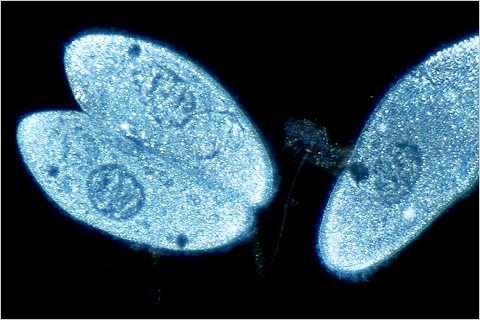
EUKARYOTA
Alveolata
[Photo © www.micrographia.com]
Chapter Outline
- Description of Eukaryotes
- Classification of Eukaryotes
- Excavates
- Amoebozoa
- Rhizaria
- Alveolata
- Stramenopiles
- Algae
- Opisthokonta

Links to external sites will appear in pop-up windows.
"A significant group containing many species of "algae" and "protozoa" -- both free-living and parasitic." [Patterson] Members of the group have alveoli, or a system of sacs underneath the cell membrane.
Resources:
- Alveolata: Dinoflagellates and Ciliates
- Pfiesteria piscicida and Pfiesteria-like organisms - U. of Maryland
| APICOMPLEXA | |
Apicomplexans are so named because species have an apical complex of microtubules within the cell. "The group is a very important part of the living biota. Apicomplexans infect both invertebrates and vertebrates; they may be relatively benign or may cause serious illnesses. Species in the genus Plasmodium cause malaria in humans and other animals." [UCMP]
Organisms:
Resources:
|
| CILIOPHORA | |
Text
Resources:
|
| DINOPHYCEAE (Dinoflagellates) | |
Text
Resources:
|
| PERKINSEA | |
Text
Organisms:
| Resources: |
| [ Previous Page ] | [ Next Page ] |